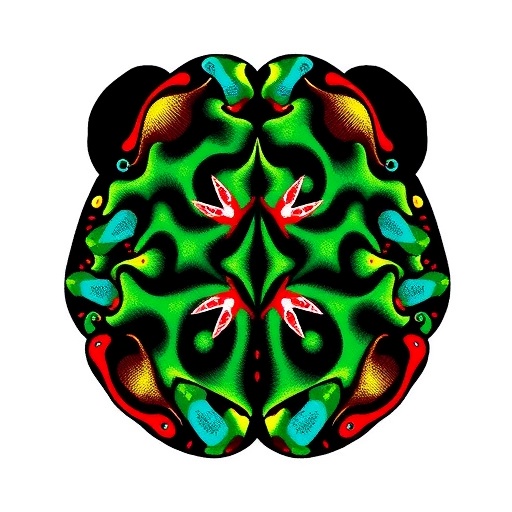PROTECT YOUR DNA WITH QUANTUM TECHNOLOGY
Orgo-Life the new way to the future Advertising by AdpathwayA groundbreaking breakthrough in the fight against bacterial colitis has emerged as researchers unveil a novel approach leveraging the power of the human gut microbiome. In an impressive feat of biomedical engineering, scientists have developed compatible oral hydrogel microspheres loaded with bacteriophages, designed to edit the gut microbiota in situ and significantly enhance therapeutic efficacy against this debilitating condition. This innovation heralds a new era of microbiota-targeted treatments that promise precision and efficiency previously unattainable by conventional antibiotics or systemic therapies.
Bacterial colitis, characterized by inflammation of the colon due to pathogenic bacterial overgrowth, presents a complex clinical challenge. Traditional treatments involving broad-spectrum antibiotics often disrupt the delicate balance of the gut microbiota, leading to undesirable side effects including recurrent infections and antibiotic resistance. The study addresses these challenges by harnessing bacteriophages—viruses that specifically infect bacteria—delivered via specially formulated hydrogel microspheres designed to survive the harsh gastrointestinal environment and act directly within the gut.
The design of these oral hydrogel microspheres is a masterclass in biomaterials science. By fine-tuning the polymer composition, researchers ensured that these microspheres are both compatible with the gut environment and stable enough to protect the bacteriophages during transit through the stomach. This stability is crucial for enabling targeted release and preserving phage viability until reaching the colon, where bacterial colitis manifests. Moreover, the microspheres’ physicochemical properties were optimized to facilitate adhesion to the intestinal mucosa, enhancing localized therapeutic action.
Central to this technology’s success is the precision in shuttling bacteriophages to the site of colitis without perturbing the broader microbial community. Unlike systemic antibiotics that indiscriminately decimate microbial populations, phages offer strain-specific killing, thereby preserving beneficial bacteria. The study demonstrates that administering these phage-loaded microspheres can selectively reduce pathogenic bacteria implicated in colitis while allowing commensal microbiota to flourish. This targeted modulation fosters gut homeostasis and mitigates inflammation.
Beyond in vitro assessments, the research team validated this strategy through rigorous in vivo experiments using well-established murine models of bacterial colitis. The results were striking: treated mice exhibited markedly reduced inflammatory markers, improved histopathological outcomes, and restored gut microbiota balance. These findings underscore the therapeutic potential of combining phage therapy with advanced biomaterials to achieve effective disease management in a spatially and temporally controlled manner.
Importantly, the study explored the immunological implications of microbiota editing via the phage-laden hydrogels. By reducing pathogenic bacterial burden, the treatment attenuated the hyperactive immune responses often observed in colitis, contributing to mucosal healing. The researchers also monitored systemic immune parameters, noting no adverse immune activation or toxicity, an encouraging indication for translational prospects and clinical safety.
From a mechanistic standpoint, the synergy between hydrogel microsphere carriers and phage biology presents a sophisticated controlled delivery platform. The hydrogels’ porous network allows gradual phage diffusion, enabling sustained antibacterial activity over extended periods. This sustained release combats bacterial regrowth and biofilm formation, common hurdles in colitis treatment. Furthermore, the protective microenvironment inside the hydrogels shields phages from enzymatic degradation, a major bottleneck in oral phage therapy.
This innovative approach also addresses the scalability and manufacturability considerations crucial for clinical translation. Using biodegradable, biocompatible polymers, the fabrication process can be adapted for large-scale production. The modularity of the system allows customization of phage cocktails to target various pathogenic profiles across individual patients—paving the way for personalized medicine applications in gastrointestinal disorders.
In addition to its therapeutic implications, this technology advances fundamental understanding of microbiota-host interactions. The precision editing of gut bacterial populations demonstrated in this work illuminates pathways by which microbiota composition influences mucosal immunity and gut barrier function. Such insights could catalyze broader microbiome research, inspiring novel interventions across a spectrum of conditions linked to microbiota dysbiosis.
Furthermore, the non-invasive oral administration route enhances patient compliance, a critical factor in managing chronic conditions like colitis. The convenience of swallowing microsphere capsules contrasts favorably against invasive or parenteral delivery methods, positioning this technology as a practical and patient-friendly solution. Combined with its specificity and efficacy, this innovation stands to revolutionize how bacterial infections within the gut are treated and controlled.
The utility of this platform is not limited to bacterial colitis. Given the versatility of phages and the adaptability of the hydrogel carrier system, there is potential for expansion into other gastrointestinal diseases characterized by pathogenic bacterial imbalances such as Clostridioides difficile infections or inflammatory bowel disorders. Future research may also explore integration with probiotics or immunomodulators to further enhance therapeutic outcomes.
This research also underscores the importance of interdisciplinary collaboration—melding microbiology, materials science, immunology, and clinical medicine—to address complex health problems. The success of these compatible hydrogel microspheres reflects deep understanding across these domains, ushering in a new class of intelligent therapeutics capable of in situ microbiota manipulation with precision and control.
Critically, this breakthrough has arrived at a time when antibiotic resistance and microbial dysbiosis present mounting global health challenges. The innovative use of phage therapy as a viable alternative or complement to antibiotics could play a pivotal role in curbing resistance development. By honing in on specific bacterial targets without collateral damage, this technology exemplifies next-generation antimicrobial strategies aligned with ecological and evolutionary dynamics of the human microbiome.
Overall, the development of phage-loaded hydrogel microspheres represents a transformative advance in microbiota-targeted therapies. Its demonstrated efficacy, safety profile, and translational potential together herald a paradigm shift in how bacterial colitis and potentially other microbiota-related diseases are managed clinically. As this technology moves toward clinical trials, it promises to reshape therapeutic landscapes by restoring microbial harmony through intelligent, in situ microbiota editing.
Looking ahead, integrating this platform with real-time microbiome monitoring could optimize dosing regimens and therapeutic timing, further enhancing treatment precision. Additionally, combining with genetic engineering techniques to modulate phage specificity and efficacy may unlock unprecedented customization tailored to individual microbiome signatures. The convergence of these cutting-edge sciences empowers a future where gut microbiota management becomes a cornerstone of personalized medicine.
Ultimately, this pioneering work exemplifies the transformative potential at the intersection of synthetic biology and biomaterials engineering. By harnessing nature’s own antibacterial agents and delivering them with engineered precision, this novel therapeutic strategy paves the way for revolutionary clinical interventions. It stands to fundamentally alter how we approach bacterial infections in the gut, offering hope for millions suffering from bacterial colitis worldwide and signaling a new dawn in microbiome medicine.
Subject of Research: In situ gut microbiota editing for bacterial colitis therapy using oral hydrogel microspheres loaded with bacteriophages.
Article Title: In situ gut microbiota editing: enhancing therapeutic efficacy for bacterial colitis by compatible oral hydrogel microspheres with phages.
Article References:
Yang, Y., Li, R., Zhong, Q. et al. In situ gut microbiota editing: enhancing therapeutic efficacy for bacterial colitis by compatible oral hydrogel microspheres with phages. Nat Commun 16, 9785 (2025). https://doi.org/10.1038/s41467-025-65498-1
Image Credits: AI Generated
DOI: https://doi.org/10.1038/s41467-025-65498-1
Tags: antibiotic resistance alternativesbacterial colitis treatmentbacteriophage delivery systembacteriophage therapeutic applicationsbiomedical engineering innovationschronic inflammation managementgastrointestinal health advancementsgut microbiome therapymicrobiota-targeted therapiesoral hydrogel microspherespolymer-based drug deliveryprecision gut health solutions


 5 hours ago
10
5 hours ago
10





















 English (US) ·
English (US) ·  French (CA) ·
French (CA) ·